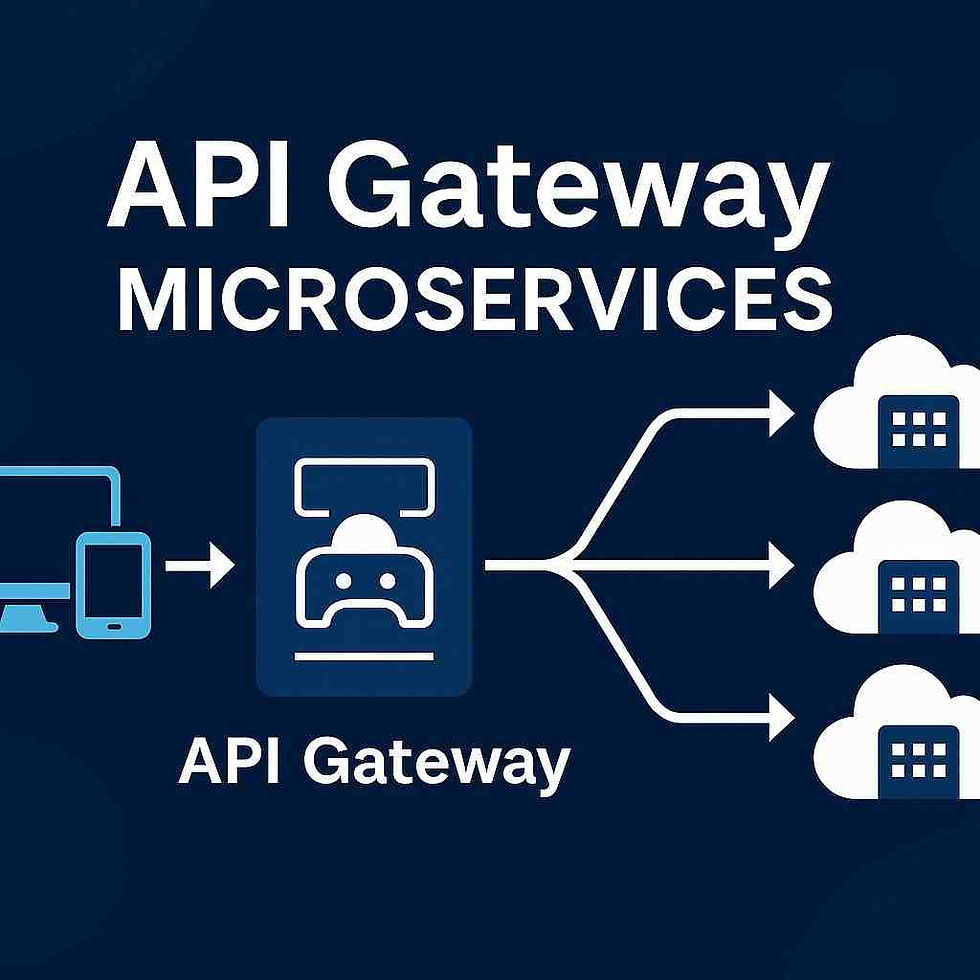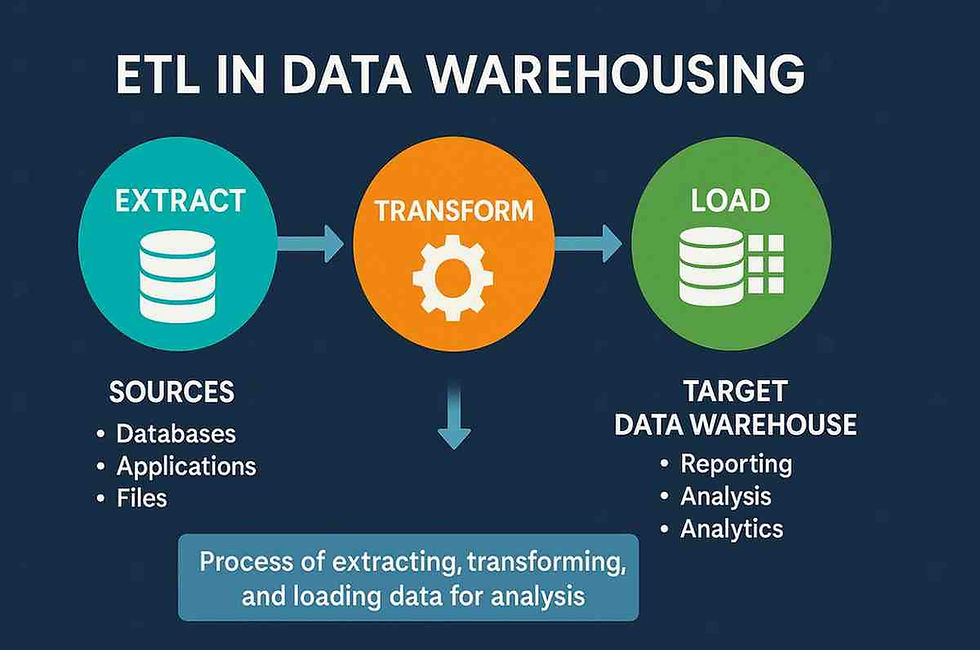User Interface Automation: Guide to UI Testing Tools & Benefits 2025
- Gunashree RS
- Jun 16
- 6 min read
Transforming Digital Testing in 2025
User interface automation has become the cornerstone of modern software development, revolutionizing how businesses test and deploy digital products. As companies increasingly rely on complex web applications and mobile interfaces, the demand for efficient, reliable testing methods has never been higher.
What is User Interface Automation and Why Does It Matter?
User interface automation refers to the process of using specialized tools and scripts to automatically test user interactions with software applications. Instead of manually clicking buttons, filling forms, and navigating through screens, automated systems perform these tasks with remarkable speed and precision.
The global user interface services market demonstrates the growing importance of this technology. According to recent market research, the UI services market is projected to grow from $23.1 billion in 2024 to $46.8 billion by 2032, representing a compound annual growth rate (CAGR) of 9.22%. This explosive growth reflects businesses' urgent need for faster, more reliable testing processes.
Key Benefits of UI Automation:
Speed Enhancement: Automated tests run 300% faster than manual testing
Accuracy Improvement: Eliminates human error in repetitive testing tasks
Cost Reduction: Reduces testing costs by up to 70% over time
24/7 Testing Capability: Runs tests continuously without human intervention
Scalability: Easily handles large-scale testing requirements
How Does User Interface Automation Transform Software Testing?
Traditional manual testing requires human testers to repeatedly perform the same actions across different browsers, devices, and operating systems. This approach is not only time-consuming but also prone to inconsistencies and errors.
UI automation transforms this landscape by creating reusable test scripts that can execute thousands of test cases in minutes.
These scripts simulate real user interactions such as:
Button clicks and navigation
Form submissions and data entry
Dropdown selections and checkbox interactions
File uploads and downloads
Cross-browser compatibility testing
According to industry experts, automated UI testing delivers significantly higher accuracy than manual testing in many instances. The technology also provides faster results and effortless scalability through reusable test scripts.
Which Industries Benefit Most from UI Automation?
User interface automation has found applications across various industries, each leveraging the technology to address specific challenges:
E-commerce and Retail
Online retailers use UI automation to test shopping cart functionality, payment processes, and inventory management systems. With global e-commerce sales expected to exceed $6 trillion by 2024, reliable testing becomes crucial for maintaining customer trust.
Banking and Financial Services
Financial institutions rely on UI automation to ensure secure login processes, transaction validations, and regulatory compliance. The BFSI sector represents the most widely adopted area for user interface technologies.
Healthcare Technology
Healthcare applications require rigorous testing to ensure patient data security and system reliability. UI automation helps healthcare providers maintain HIPAA compliance while delivering seamless user experiences.
Software Development
Technology companies use UI automation to test their own products, ensuring consistent functionality across different platforms and user scenarios.
What Are the Top User Interface Automation Tools in 2025?

The market offers numerous UI automation tools, each with unique strengths and capabilities. Here are the leading solutions:
1. Selenium WebDriver
Strengths: Open-source, multi-language support, extensive community
Best For: Cross-browser testing, complex web applications
Market Share: 45% of the automation testing market
2. Cypress
Strengths: Fast execution, real-time reloading, excellent debugging
Best For: Modern JavaScript applications, developer-friendly testing
Unique Feature: Runs tests directly in the browser
3. Playwright
Strengths: Multi-browser support, mobile testing capabilities
Best For: End-to-end testing, API testing integration
Performance: 40% faster than traditional tools
4. TestComplete
Strengths: Codeless testing, AI-powered object recognition
Best For: Desktop, web, and mobile application testing
ROI: 250% return on investment within the first year
5. Appium
Strengths: Mobile-first approach, native app testing
Best For: iOS and Android application testing
Coverage: Supports 95% of mobile testing scenarios
How Can Organizations Implement UI Automation Successfully?

Successful UI automation implementation requires a strategic approach that considers both technical and organizational factors:
Phase 1: Assessment and Planning
Audit existing testing processes
Identify repetitive test cases
Evaluate tool compatibility
Establish success metrics
Phase 2: Tool Selection and Setup
Compare automation tools based on specific needs
Set up testing environments
Configure integration with existing systems
Train team members on selected tools
Phase 3: Script Development and Testing
Create reusable test scripts
Implement data-driven testing approaches
Establish naming conventions and documentation
Perform initial validation testing
Phase 4: Deployment and Maintenance
Integrate with CI/CD pipelines
Monitor test execution and results
Regular script updates and maintenance
Continuous improvement and optimization
What Challenges Should Organizations Expect?
While UI automation offers significant benefits, organizations must prepare for common challenges:
Technical Challenges:
Dynamic web elements that change frequently
Cross-browser compatibility issues
Test script maintenance overhead
Integration complexity with existing systems
Organizational Challenges:
Initial investment in tools and training
Resistance to change from manual testing teams
Skill gap in automation expertise
Balancing automation with manual testing needs
Industry research shows that 57% of companies report better employee engagement after implementing automation, dispelling common concerns about job displacement.
How Does UI Automation Impact Business ROI?

The financial impact of UI automation extends far beyond reduced testing costs:
Direct Cost Savings
Reduced manual testing hours: 60-80% reduction in testing time
Lower defect rates: 45% fewer production bugs
Faster release cycles: 3x faster deployment frequency
Indirect Benefits
Improved customer satisfaction: Higher quality products lead to better user experiences.
Competitive advantage: Faster time-to-market capabilities
Resource optimization: Teams can focus on strategic initiatives rather than repetitive tasks
Long-term Value
Organizations typically see a 300% return on investment within two years of implementing comprehensive UI automation strategies.
What Does the Future Hold for UI Automation?
The future of user interface automation is shaped by emerging technologies and evolving user expectations:
Artificial Intelligence Integration
AI-powered testing tools are becoming increasingly sophisticated, offering:
Self-healing test scripts that adapt to UI changes
Intelligent test case generation based on user behavior
Predictive analytics for identifying potential issues
Low-Code/No-Code Solutions
The democratization of automation through visual interfaces allows non-technical team members to create and maintain test scripts.
Cloud-Based Testing
Cloud platforms provide scalable testing environments that can simulate thousands of concurrent users across different geographical locations.
Frequently Asked Questions
What is the difference between UI automation and manual testing?
UI automation uses scripts and tools to automatically execute test cases, while manual testing requires human testers to perform actions manually. Automation is faster, more consistent, and can run 24/7, but manual testing is better for exploratory testing and user experience evaluation.
How long does it take to implement UI automation?
Implementation typically takes 3-6 months, depending on application complexity and team experience. Initial setup requires 2-4 weeks, followed by script development and testing phases.
Can UI automation replace manual testing completely?
No, UI automation complements manual testing rather than replacing it. Manual testing remains essential for usability testing, exploratory testing, and scenarios requiring human judgment.
What programming skills are needed for UI automation?
Basic programming knowledge in languages like Java, Python, or JavaScript is helpful but not always required. Many modern tools offer record-and-playback features and visual scripting interfaces.
How do you measure the success of UI automation?
Key metrics include test execution time reduction, defect detection rate, test coverage percentage, maintenance effort, and return on investment. Most organizations see 60-80% time savings within the first year.
What are the most common UI automation challenges?
Common challenges include maintaining test scripts as applications change, handling dynamic web elements, ensuring cross-browser compatibility, and balancing automation investment with expected returns.
Is UI automation suitable for small businesses?
Yes, even small businesses can benefit from UI automation. Open-source tools like Selenium provide cost-effective solutions, and cloud-based platforms eliminate infrastructure requirements.
How often should automated tests be updated?
Test scripts should be reviewed and updated regularly, typically with each application release or when UI changes occur. Implementing self-healing capabilities can reduce maintenance frequency.
Conclusion
User interface automation represents a fundamental shift in how organizations approach software testing. With the UI services market projected to reach $46.8 billion by 2032, businesses that embrace automation today will gain significant competitive advantages.
The technology offers compelling benefits: 300% faster testing, 70% cost reduction, and 24/7 testing capabilities. However, success requires strategic planning, proper tool selection, and ongoing commitment to optimization.
As artificial intelligence and cloud technologies continue to evolve, UI automation will become even more powerful and accessible. Organizations that begin their automation journey now will be best positioned to capitalize on these emerging opportunities.
Key Takeaways
• Market Growth: The UI services market is growing at 9.22% CAGR, reaching $46.8 billion by 2032
• Efficiency Gains: Automated testing runs 300% faster than manual testing methods
• Cost Benefits: Organizations achieve a 70% reduction in testing costs over time
• ROI Achievement: 250-300% return on investment within the first two years of implementation
• Tool Diversity: Leading tools include Selenium, Cypress, Playwright, TestComplete, and Appium
• Implementation Timeline: Typical deployment takes 3-6 months from planning to full execution
• Skills Requirement: Basic programming knowledge is helpful but not always mandatory
• Maintenance Necessity: Regular script updates are required for optimal performance
• Hybrid Approach: Automation complements rather than replaces manual testing entirely
• Future Trends: AI integration and cloud-based solutions driving next-generation capabilities
Article Sources
Market Research Future - User Interface Services Market Research Report 2024-2032
DataIntelo - Global User Interface Services Market Analysis 2024
Verified Market Reports - User Interface Services Market Size and Trends Report
Global Growth Insights - UI Design Market Forecast 2024-2032
Dovetail - Automated UI Testing Tools Analysis 2024
Analytics Insight - Top 10 UI Automation Tools for 2024




This story is a stark reminder of how critical it is for licensed transport services and safety frameworks to protect passengers—especially when trust is broken and harm occurs. It also underlines the importance of reliable industry practices in all vehicle services. If you’re interested in how precision and specialist care play a work in automotive maintenance, you might explore https://www.bcs-automotive.co.uk/brake-caliper-refurbishment/ .
INDOVIP138
indovip138
indovip138
indovip138
indovip138
indovip138
indovip138
indovip138
indovip138
indovip138
indovip138
indovip138
indovip138
indovip138
indovip138
indovip138
indovip138
indovip138
indovip138
indovip138
indovip138
indovip138
indovip138
indovip138
indovip138
indovip138
indovip138
indovip138
indovip138
indovip138
indovip138
indovip138
indovip138
indovip138
indovip138
indovip138
indovip138
indovip138
indovip138
indovip138
indovip138
indovip138
indovip138
indovip138
indovip138
Link INDOVIP138
indovip138
indovip138
indovip138
indovip138
indovip138
indovip138
indovip138
indovip138
indovip138
indovip138
indovip138
indovip138
indovip138
indovip138
indovip138
indovip138
indovip138
indovip138
indovip138
indovip138
indovip138
indovip138
indovip138
indovip138
indovip138
indovip138
indovip138
indovip138
indovip138
indovip138
indovip138
indovip138
As you progress in Eggy Car, the road gets steeper, testing your patience and driving skills.